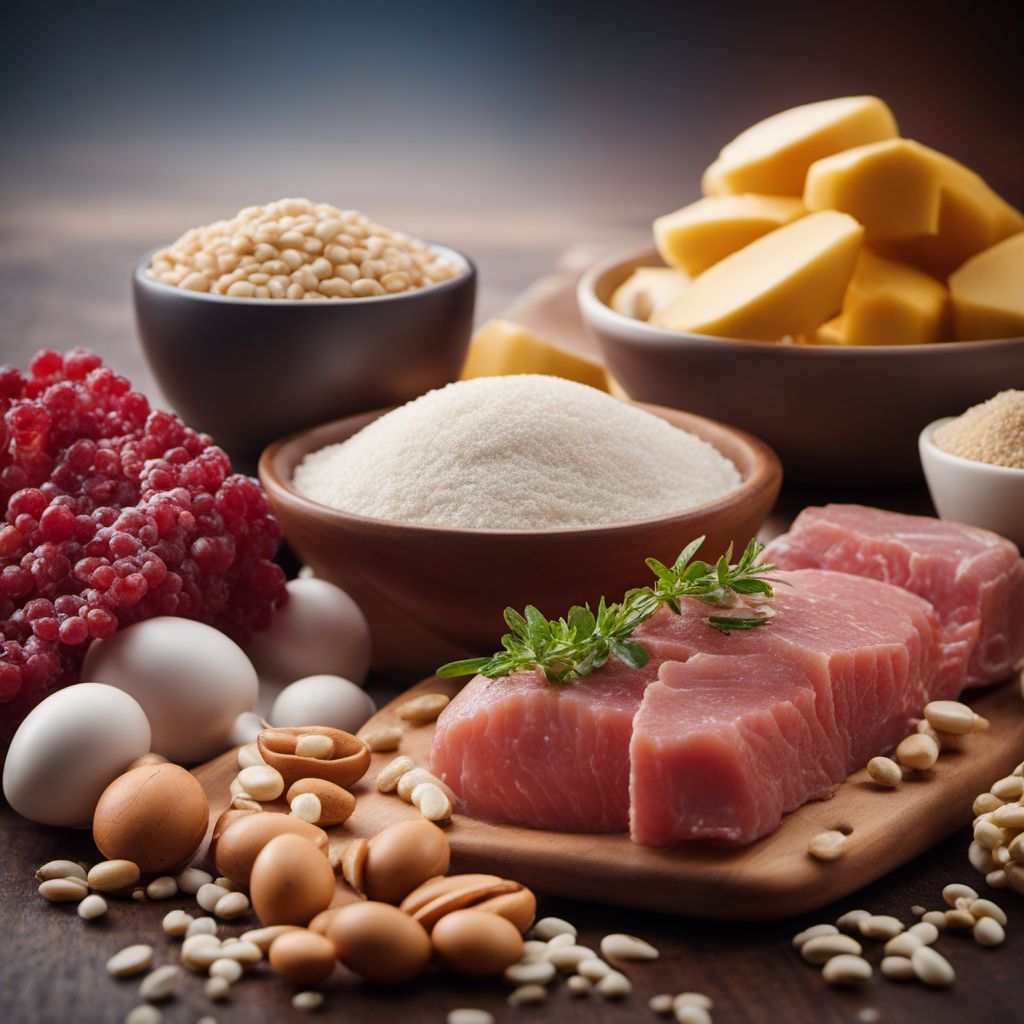
Ingredient
Protein and protein components for sports people
The Tropical Delight
Pineapple is a tropical fruit with a unique appearance and taste. It has a rough, spiky exterior that hides a juicy, golden-yellow flesh. The flavor of pineapple is a delightful combination of sweetness and tanginess, making it a versatile ingredient in both sweet and savory recipes. Its texture is juicy and fibrous, providing a satisfying crunch. Pineapple is commonly enjoyed fresh, but it can also be used in cooking, baking, and juicing.
Origins and history
Pineapple is native to South America, specifically the region between southern Brazil and Paraguay. It was later spread to other parts of the world by European explorers and traders. Pineapple cultivation became prominent in Hawaii, where it thrived in the tropical climate and volcanic soil. Today, pineapples are grown in various tropical regions around the world, including the Philippines, Thailand, and Costa Rica. Pineapple holds cultural significance in many countries and is often associated with hospitality and warmth.
Nutritional information
Pineapple is a good source of vitamin C, manganese, and dietary fiber. It also contains bromelain, an enzyme that aids in digestion. Additionally, pineapple is low in calories and fat, making it a healthy choice for snacking or incorporating into meals.
How to select
When selecting a pineapple, look for one that is firm and heavy for its size. Avoid pineapples with soft spots, bruises, or mold. The color of the pineapple's exterior should be golden or yellow, indicating ripeness. The leaves at the crown should be green and fresh-looking. A sweet aroma at the base of the pineapple is also a good indicator of its ripeness and flavor.
Storage recommendations
To maintain the freshness of a whole pineapple, store it at room temperature for up to two days. Once cut, store the pineapple in an airtight container or wrap it tightly in plastic wrap and refrigerate. Pineapple can also be frozen for longer storage. However, freezing may affect its texture slightly.
How to produce
Pineapple plants can be grown from the crown of a mature pineapple. Cut off the crown, remove any excess fruit flesh, and allow it to dry for a few days. Plant the crown in well-draining soil, ensuring that the base is covered. Water the plant regularly and provide it with ample sunlight. With proper care, the pineapple plant will grow and eventually produce fruit.
Preparation tips
Pineapple can be enjoyed fresh as a snack, added to fruit salads, or used in smoothies and juices. It is a popular ingredient in tropical desserts, such as pineapple upside-down cake and piña colada. In savory dishes, pineapple can be grilled, roasted, or used in salsas and marinades to add a burst of flavor. It pairs well with meats, seafood, and vegetables, bringing a touch of sweetness and acidity to the dish.
Substitutions
Mango can be used as a substitute for pineapple in some recipes, as it shares a similar tropical flavor and sweetness. However, mango has a softer texture compared to pineapple. Alternatively, other tropical fruits like papaya or kiwi can be used to add a tangy and sweet element to dishes.
Culinary uses
Pineapple is widely used in various cuisines around the world. It is a staple in tropical and Hawaiian cuisine, where it is incorporated into dishes like Hawaiian pizza, teriyaki chicken, and fruit salads. Pineapple is also commonly used in Asian stir-fries, Thai curries, and Mexican salsas. Its versatility allows it to be used in both sweet and savory applications, making it a beloved ingredient in many cultures.
Availability
Pineapple is commonly available in tropical regions, such as Southeast Asia, Central and South America, and Hawaii. It is also cultivated in other parts of the world with suitable climates, including Australia, India, and Africa.
More ingredients from this category

Carbohydrate-rich energy food products for sports people
Fueling Performance: Carbohydrate-rich Energy Foods for Athletes

Carbohydrate-electrolyte solutions for sports people
The Power of Sports Nutrition: Carbohydrate-Electrolyte Solutions

Micronutrients supplement for sports people
Powerful Boost for Athletes

Carnitine or creatine-based supplement for sports people
"Powerful Performance Boosters: Unleashing the Potential of Carnitine and Creatine Supplements"